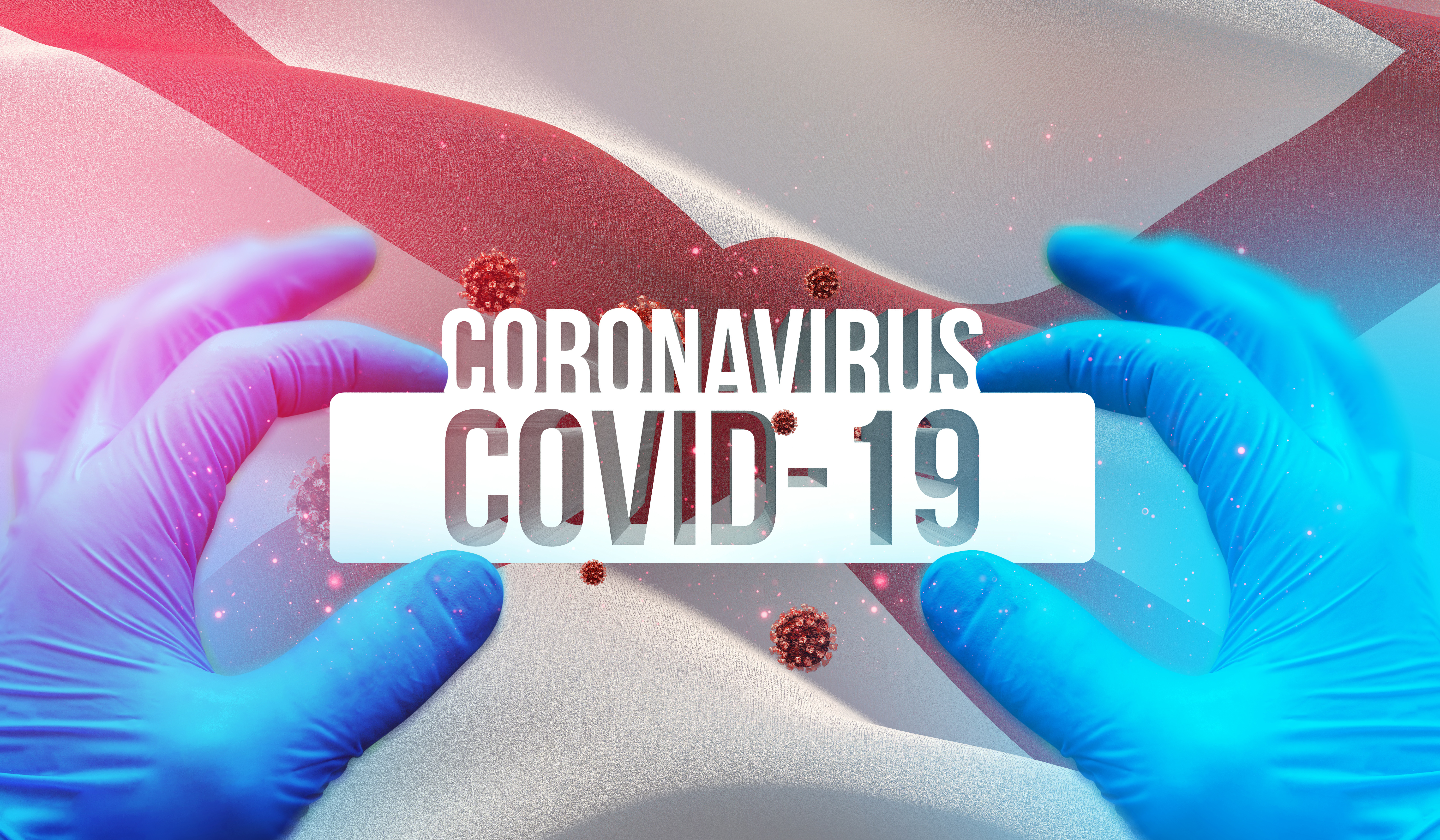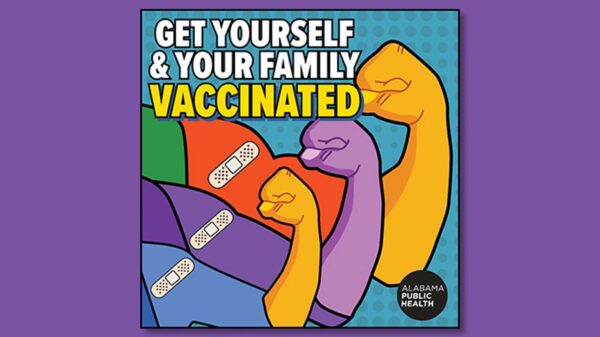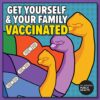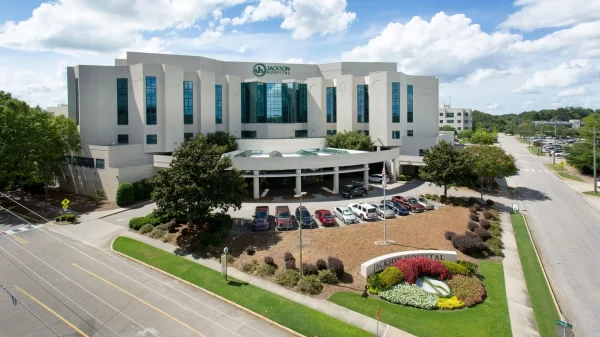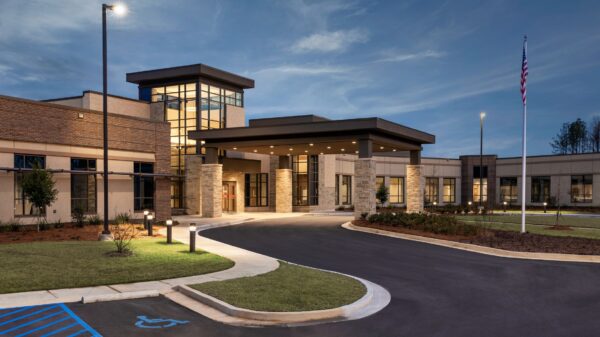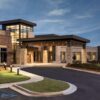Dr. David Thrasher, M.D., is a Montgomery-area pulmonologist and the head of pulmonology at Jackson Hospital.
I’ve been asked by many people to give an update on where we are in Montgomery with the COVID-19 pandemic. First, let me say I cannot offer any medical advice or instructions online. Having said that, I do think there is a place to post factual information as there is so much false information, rumors and innuendos circulating.
I would like to quote President Abraham Lincoln: “I am a firm believer in the people. If given the truth, they can be depended upon to meet any national crisis. The great point is to bring them the real facts.”
Where are we in Alabama and in Montgomery?
Montgomery saw the first patient with COVID-19 in Alabama as well as the first patient to require intensive care and a ventilator in the state. Montgomery was relatively spared early on in the pandemic. Perhaps Montgomery was lucky. “We had been spared,” I thought.
I was wrong.
Over the last month, there has been a significant increase in the number of cases in Montgomery. The number of cases requiring hospitalization and treatment in intensive care units has significantly increased. Both major hospitals in Montgomery have enacted aggressive plans for handling the large number of COVID-19 patients.
One of the hospitals has converted three of its intensive care units to COVID-only units. Both hospitals have COVID-only floors, and the emergency room is frequently used for overflow to take care of patients requiring vents.
As one of our CEOs said recently, “we are managing but this is not sustainable.” We have unbelievable nurses and respiratory therapists who are working around the clock to take care of these critically ill patients. It has definitely been a challenge for hospitals to continue to provide quality nursing and respiratory therapy personnel. We have had doctors, nurses, cleaning personnel and respiratory therapists become infected.
As I have said before these brave nurses and respiratory therapists are my true heroes.
There has been a minor controversy regarding the number of ICU beds available from time to time. It is not uncommon in the winter months for us always to have a shortage of intensive care beds. We will frequently turn another area of the hospital, including emergency rooms, into short-term intensive care units. That is occurring today.
As I’ve said before, give me a good nurse, a ventilator and a monitor, and I’ll put you in the parking lot and provide you with an ICU. So how about ventilators? Last March, there was a shortage in certain cities. Again, this happens each winter, and there is a process for hospitals to borrow ventilators from other hospitals.
As of now, we have plenty of ventilators in the state of Alabama. As for Montgomery Pulmonary Consultants, I have six great partners. Our workload is double our normal capacity. All seven of us are putting in long hours especially on the weekends, which is especially difficult.
I want to brag on our great community. People have given gift cards, provided meals and other support for the hospital and first responders. Our local businesses have provided money so that entire COVID-units now have safe N-100 respirators. My biggest regret early on in the pandemic was not having adequate PPE equipment for our frontline people.
History
My partner, Dr. Lisa Williams, saw the first patient with COVID-19 in Alabama on March 11. Ironically, that was the day that the World Health Organization declared COVID-19 to be a pandemic. Ironically, it was also 102 years — almost to the day — that private Albert Gitchell of the U.S. Army reported to the hospital at Fort Riley Kansas complaining of cold-like symptoms of sore throat, fever and headache.
By noon, more than 100 of his fellow soldiers had reported similar symptoms, marking what is believed to be the first cases of the historic influenza pandemic of 1918. This would eventually be called the Spanish Flu. That flu eventually killed 675,000 Americans and an estimated 50 million people worldwide.
How did it get the name Spanish flu? Spain was neutral during World War I and, unlike its European neighbors and the United States, it did not impose wartime censorship of the press. The United States and our allies censored the press because they did not want the people to know how bad the death rate was as it was felt that reporting the devastating death rate would hurt the war effort.
Spain had no such limitations and kept reporting the news of a crippling virus that was sweeping through the country. Spain would eventually report 8 million deaths in that country. Therefore, the 1918 epidemic was deemed the Spanish Flu. Actually, it should have been called the American Flu or the Fort Riley Kansas Flu. Like COVID-19, the Spanish Flu would gradually sweep across America and, by the summer of 1918, it would kill approximately 100,000 Americans.
Because we were in World War I, our troops were shipped to Europe. On the battlefield in France the virus spread very quickly. It gradually spread all over the world. As our troops began returning to America in the fall of 1918, a second, more deadly wave occurred.
While the global pandemic lasted for two years, the vast majority of deaths were packed into three especially cruel months in the fall of 1918. We now believe that the fatal severity of the Spanish Flu’s second wave was caused by a mutated virus spread by wartime troop movements.
Like the seasonal flu, the Spanish Flu was especially hard on the young and otherwise healthy 25- to 35-year-olds in the prime of their life. At the time, the medical establishment could not understand why so many young men were dying of pneumonia-like symptoms. Only decades later were scientists able to explain the phenomenon now known as “Cytokine Storm.” When the human body is attacked by a virus, the immune system sends messenger proteins called cytokines to promote helpful inflammation.
Some strains of the flu — as well as COVID-19 — trigger a dangerous immune overreaction in healthy individuals. In those cases, the body is overloaded with cytokines, causing severe inflammation and fatal buildup of fluid in the lungs. British military doctors conducting autopsies on soldiers killed by the second wave and described the lungs as akin to the effects of chemical warfare.
The rapid spread of the Spanish Flu in the fall of 1918 was at least partially to blame for public health officials unwilling to impose quarantine during wartime. The public health response to the crisis in the United States was further hampered by a severe nursing shortage of thousands of nurses that had been deployed to the military camps and the front lines.
The shortage was worsened by the American Red Cross refusal to use trained African-American nurses until the worst of the pandemic had already passed. But one of the chief reasons that the Spanish Flu claimed so many lives in 1918 and 1919 was that we simply did not have the tools to develop a vaccine for the virus. The virus would eventually peter out in 1919 after it killed almost 50 million people worldwide.
The Origin of COVID-19
COVID-19 originated in China, most likely in November or December of 2019. COVID-19 is just another instance in the long history of the so-called zoonoses-diseases that jump from animals to humans. The domestication of the horse led to the virus responsible for the common cold in humans as well as the Spanish Flu. The domestication of chickens gave humans chickenpox, shingles and various strains of the bird flu. Pigs were the source of influenza, measles and smallpox. Tuberculosis emerged from cattle.
When a virus successfully jumps species from an animal to human, and that version of the virus, in turn, succeeds in making the jump to a second human, those two people become the first two human vectors of human-to-human virus transmission.
Three-quarters of infectious diseases are the result of zoonotic spillovers and the novel coronavirus is no exception. The term coronavirus refers to a family of viruses, shaped like a crown, and it accounts for about 10 percent of common colds in humans.
Novel coronaviruses have made the jump into the human population on three occasions in the 21st Century — each time causing a deadly pandemic: SARS, MERS and COVID-19. As early as 2007, the world was put on notice by an American Society for Microbiology Journal in which researchers warned “the presence of a large reservoir of SARS/COV-like viruses in horseshoe bats, together with a culture of eating exotic mammals in southern China, is a time bomb. The possibility of the emergence of SARS and other novel viruses from animals or laboratories and therefore the need for preparedness should not be ignored.” But ignored it was.
Morbidity and mortality — who gets COVID-19?
I get frustrated and actually mad when I hear people say that COVID-19 is no more deadly or dangerous than the seasonal flu. These statements clearly come from people who’ve never treated patients in an intensive care unit with COVID-19 patients. I’ve heard this from physicians as well as laypeople. I have treated every seasonal flu episode since 1983. This is not close to seasonal flu.
We experienced a tough winter when the H1N1 swine flu came through, and it was unusually lethal but nothing like what we’re seeing today with COVID-19. I started following this in February as I was working an event in Austria. At that time, I predicted that 100,000 to 200,000 Americans would die before we had a vaccine.
Today, I think that my estimation will probably be too low. As of today, the worldwide and U.S. death rate is approximately 5.7 percent of confirmed cases. Sweden’s death rate of confirmed cases is 10.4 percent — with their experiment with the concept of herd immunity and refusal to do any lockdowns.
We know that there is a large percentage of asymptomatic cases — perhaps 25 percent or even higher. By the time the virus burns out, I predict that the overall mortality rate will be between 1.3 and 2 percent. That sounds low, but this is opposed to the seasonal flu mortality rate of 0.1 percent.
There are more than 350 million Americans, so you can do the math, but it is imperative that we contain this virus and develop a vaccine as soon as possible. I do know that many of the people that survive will be left with significant and permanent organ damage — especially in the lungs and kidneys.
Who is affected? These change daily, but as of June 11, 2020, in Alabama:
- 58 percent of cases are female, and 42 percent are male.
- 42 percent of cases are black, 37 percent are white, and 10 percent are Hispanic.
- 46 percent of deaths are female, and 54 percent are male.
- 45 percent of deaths are black, and 49 percent are white, while 2 percent are Hispanic.
What are the ages?
- Ages 0 to 4 represent 1.4 percent of the cases.
- Ages 5 to 24 represent 14 percent of the cases.
- Ages 25 to 49 represent 41 percent of the cases.
- Ages 50 to 64 represent 23 percent of the cases.
- Ages greater than 65 represent only 20 percent of the cases.
Who dies?
- Ages 0 to 4 represent 0.1 percent of deaths.
- Ages 5-24 represent 0.3 percent of the deaths.
- Ages 25-49 represent 3.9 percent of the deaths.
- Ages 50-64 represent 16.7 percent of the deaths.
- Ages 65 and older represent 79.1 percent of the deaths.
Health care workers represent 11.4 percent of Alabama’s total cases, while health care workers, long-term care facility employees and long-term care facility residents represent 25.2 percent of all cases. Roughly 48 percent of deaths in Alabama have been among those who are residents of long-term care facilities.
Treatments
I am not going to go into specific treatment modalities in this paper but suffice it to say we are using cutting edge treatments. At Montgomery Pulmonary Consultants, my partners Dr. Lorino, Dr. Williams, Dr. Ensminger, Dr. Saliski, Dr. Noriega and Dr. Vyas have been in contact with UAB as well as several other cutting-edge institutions regarding therapies.
Currently, numerous studies have been conducted not only at UAB but other institutions. I must say that UAB is on the cutting edge of this pandemic. Remdesivir, the only FDA approved treatment for the virus, was developed in coordination with UAB and Dr. Rich Whitley.
Some of the trials have used various medications late in the disease when people were on the ventilator. There is a growing belief that treating this illness sooner than later will have beneficial results and hopefully prevent patients from developing fatal lung damage.
Flattening the curve
You’ve all heard this phrase. What does it mean? Early on, our mayor in Montgomery, our governor and our president called for various forms of lockdowns or sheltering in place. The reason for this was to “flatten the curve.” Why do we do this? As a fisheries biology major in college, I will use my fishpond example.
If you put a Lilly pad in a fishpond and it doubles every day it takes 60 days to completely fill up the pond. At first, it is a slow process. At day 54, only 1 percent of the pond is consumed. At day 59, half of the pond is consumed. By the next day, the entire pond is consumed.
The point I’m making is that it takes time for the virus to work through the population. If we spread out this process lives can be saved. We know that in the end, flattening of the curve only spreads out the infectious process and the total number of people infected remains the same at the end of the pandemic. However, lives are saved by flattening or spreading out the rate of infection. If large numbers get infected at the same time, the health care system is overloaded — the intensive care units, the number of ventilators, number of Pulmonary/Critical Care doctors simply cannot handle the surge and lives will be lost if that happens. We’ve seen that happen in Italy.
Economic considerations
I am asked frequently, “should we protect lives or businesses?” I have to wear two hats — a medical hat and a business hat. We cannot shut down America or we will die as a nation. We could completely eliminate this virus in 30 days if we did shut down everything. This virus has to move on from one living creature to another every 14 to 21 days. If everyone in the world would isolate for 30 days, the virus would go away.
Of course, that could never happen. All we can hope for is to slow down the spread, which we have hopefully done until they develop a vaccine. I hope that we will not have to have any more lockdowns. During the lockdown, our unemployment rate was close to 20 percent. We know that with every one percent increase in unemployment, we can see up to a 3.6 percent increase in overdoses and a 1 percent increase in suicides across the country.
I was coroner of Montgomery County for 13 years, and during the Great Recession, I saw an increase in suicides as well as overdoses because of financial considerations. The Federal Reserve of St. Louis has predicted a “worst-case scenario” of 32% unemployment. If that were to happen some 77,000 Americans could die in addition to those who were stricken with COVID-19.
How can we accomplish both? This is the million-dollar question. We have to protect our citizens who are most vulnerable. We know that people over the age of 60 years old represent the majority of deaths from COVID-19. If they are retired and have the ability, they should socially isolate as much as possible.
Having said that, is very important as Americans to be able to fellowship. I have not hugged or kissed my grandchildren since February. I have eaten with them — outside in a picnic-like environment and conversed with them as much as possible. It is important for Americans to be able to fellowship and not isolate totally, but we have to do it carefully. The 6-foot rule and masks are so important.
Churches
I have had the privilege of conversing with several of Montgomery’s religious leaders during this pandemic. Montgomery is blessed with many wonderful pastors, and they have stepped up during this pandemic as well as the recent protests of the tragic death of George Floyd. People ask the question — where do the hotspots of pandemics originate?
You would say cruise ships, but you would be wrong. The three hotspots of pandemics are religious ceremonies, call centers and meatpacking plants. One of the largest and deadliest sparks in Alabama came from a religious ceremony in East Alabama. Another spark occurred on the West Coast and involved a super-spreader infecting an entire choir and several members died.
We know that singing, loud talking and laughing spreads the virus significantly. I’ve been asked how can you condone people going back to work and going to recreational activities but yet advise not having in-service religious ceremonies? As I have stated, we must support our local businesses, or they will simply not exist. We have to safely support those institutions.
Churches and synagogues on the other hand can exist without having the congregation gather in tight quarters. It is nearly impossible to maintain social distancing in church. Children frequently run through the halls, and it is common that we all hug and shake hands with our fellow congregants.
Bathrooms are another consideration and difficult to manage and keep clean during the condensed time frame that the services are conducted. We can all worship remotely or outside as far as that goes. We all long for the time we can gather again but this needs to be done when it is safe.
Historically in Montgomery, a congregation has many of its members over the age of 60. As I told leaders of the religious communities, people believe what they say. If they say, “come to church,” people believe them and know that it is safe. They have an enormous responsibility to protect their flock. We all look forward to the day that we can gather again in-person in our churches, synagogues and other religious institutions, but until the case numbers start to fall, I would prefer to do this remotely.
Masks
I know why there has been so much confusion over masks. To be honest, early on, the CDC, the president, the surgeon general, the governors and hospitals got this wrong. They said the reason was to keep the public from hoarding masks that were in such short supply when the PPE problem was so bad in March. Masks have been worn for decades in Asian countries when people felt that they were sick. We know that this helped stem the contagion in China as well as Korea. The Czech Republic also required masks early on and this helped them greatly as opposed to many other European countries who did not use masks.
Unfortunately, this has become such a political issue that it will lead to more infections and deaths. In a study published in April, in Nature, scientists showed that when people who are infected with influenza, rhinoviruses or a mild cold-causing coronavirus wore a mask, it blocked nearly 100 percent of the viral droplets they exhaled as well as many tiny aerosol particles.
Some governments and businesses are beginning to require or at least recommend that masks be worn in many public settings.
There is growing evidence that some kinds of masks may protect you from other people’s germs. If two people are in public and 6 feet apart and one person has COVID-19 and coughs or sneezes, there is a great chance that the other person will not become infected. Studies have shown the N95 mask is able to capture over 90 percent of viral particles and plain blue surgical masks block between 50 percent to 80 percent of particles, whereas a cloth mask blocks 10 to 30 percent of viral particles.
This isn’t Republican versus Democrat or Auburn versus Alabama. We are all on the same team. Wearing a mask helps protect your neighbor. It doesn’t make you a criminal. It doesn’t make you a bank robber. It simply helps protect your neighbor. Some people tell me I don’t like to wear a mask because it’s hot. Believe me, if you don’t like wearing a mask, you are really not going to like my ventilator!
When will it be over?
The short answer is when a vaccine is available. Vaccines for a novel virus typically take 8 or more years to develop, but the whole world is working on this vaccine at warp speed. More than 53 companies are working on the vaccine that I know of. Reports that a vaccine may be available as early as this fall are coming out.
If that is the case, I will say “thank the Lord.” Personally, I think it would be a near miracle should a vaccine be approved and manufactured in sufficient quantities to vaccinate our citizens by year’s end. Short of a vaccine. I fear that we will be battling this virus well into next year. There are also concerns about mutations of the virus and acquired immunity fading, which could affect the effectiveness of a vaccine.




































